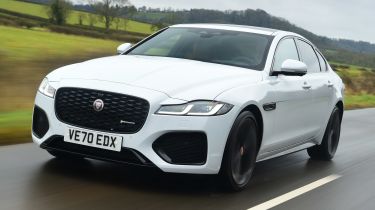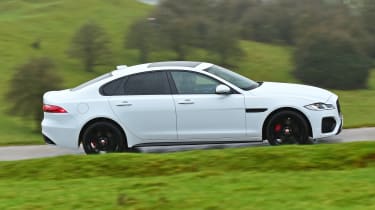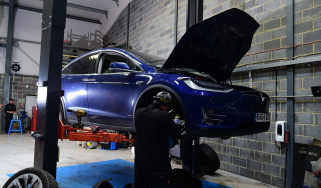Jaguar XF review - MPG, CO2 and running costs
New diesel mild-hybrid tech helps to improve economy for the XF, but it still lags behind the best in class

If you’re after a CO2 champion, then you need to look elsewhere in the executive saloon market, as the XF doesn't fare particularly well.
Jaguar has attempted to address the economy shortfalls of the XF by introducing mild-hybrid tech for its 2.0-litre diesel engine. It certainly goes someway to making running costs more competitive, but a plug-in hybrid such as the BMW 530e or Mercedes E300 e, although costing more to buy, will offer vastly superior economy and lower CO2 emissions.
The XF D200, in rear-wheel-drive form, manages a decent 57.2mpg while emitting 130g/km. Opting for the benefits of four-wheel-drive results in a slightly less-efficient car: Jaguar claims a maximum 51.8mpg and 143g/km of CO2.
Entry-level petrol power sees the P250 delivering 35.2mpg with 181g/km of CO2, while the top-of-the-range P300 offers 32.9mpg and emissions of 193g/km.
Following the streamlining of the XF range, Jaguar has managed to reduce the starting price by almost £2,500, so you'll be able to bag the D200 S version for just over £32,500.
Insurance groups
Insurance premiums should be on a par with rivals, although with the entry D200 S diesel model sitting in group 34, comprehensive cover won't be cheap. The top R-Dynamic HSE trim pushes the D200 car into group 36.
The P250 S petrol version also occupies group 36, while the P300 R-Dynamic HSE is in group 39.
Depreciation
Our data suggests the facelifted XF will perform better than the previous model on the used market. Residual values should range from 43-49% after a typical three-year/36,000-mile ownership period, which is more aligned with the XF's German rivals.









